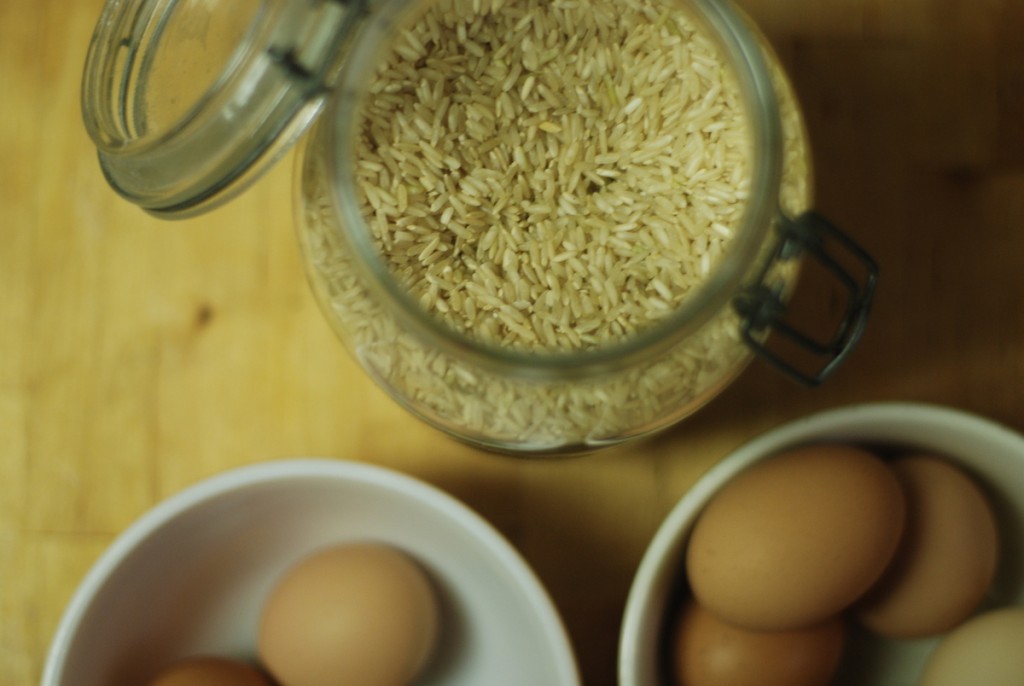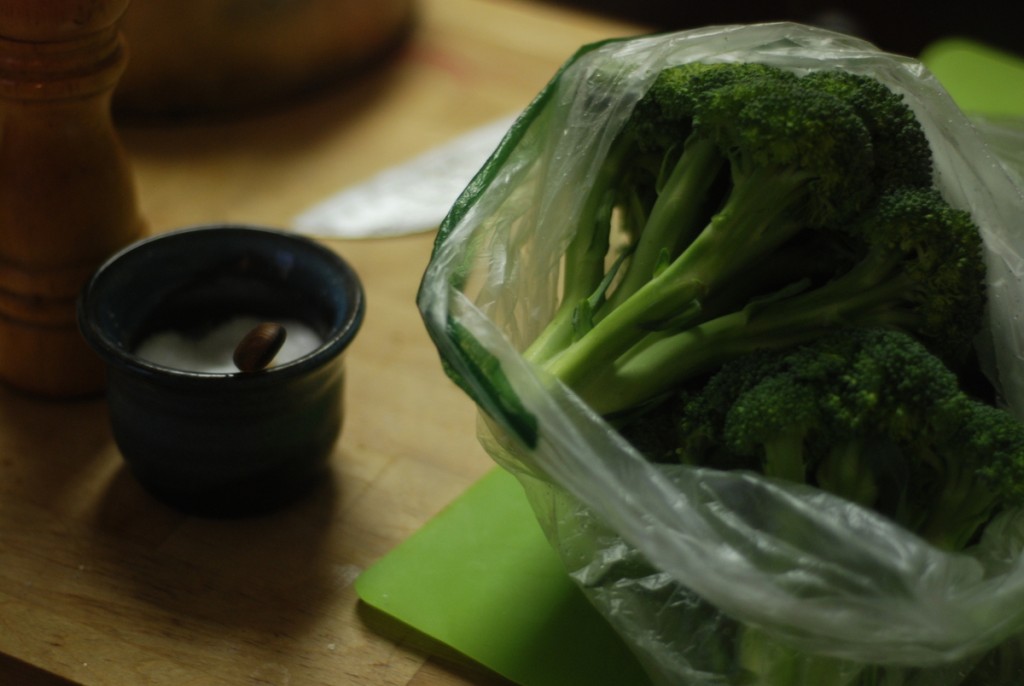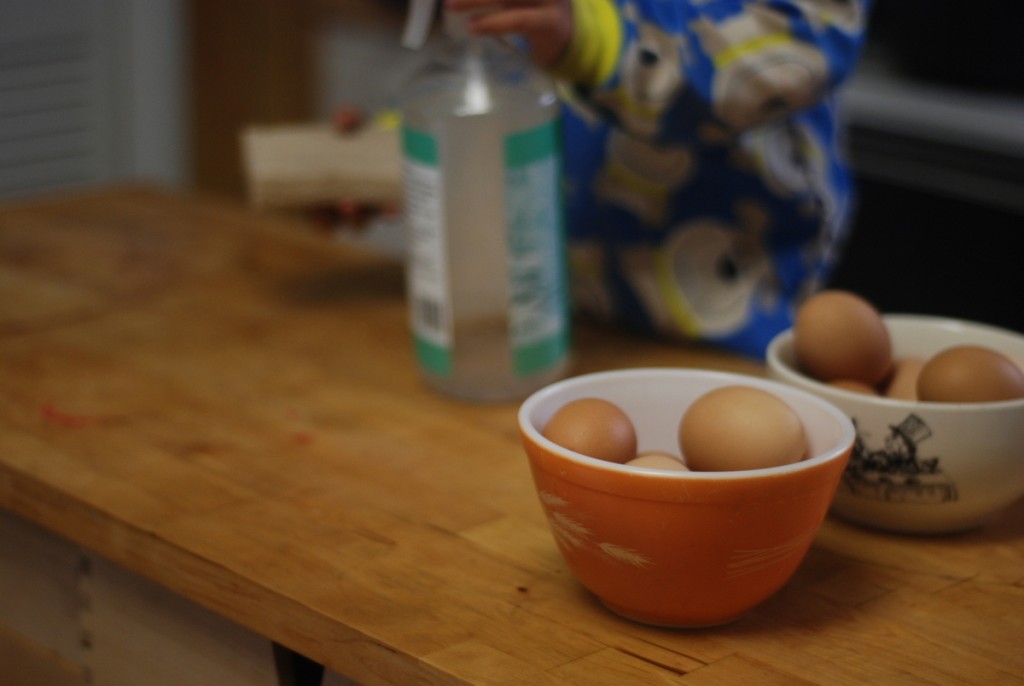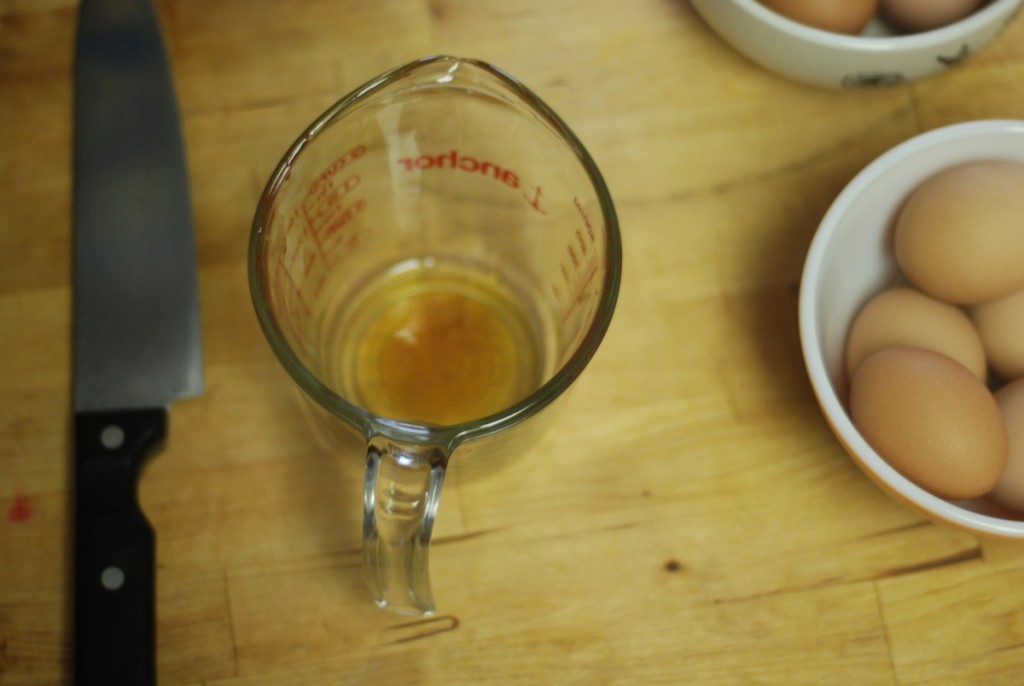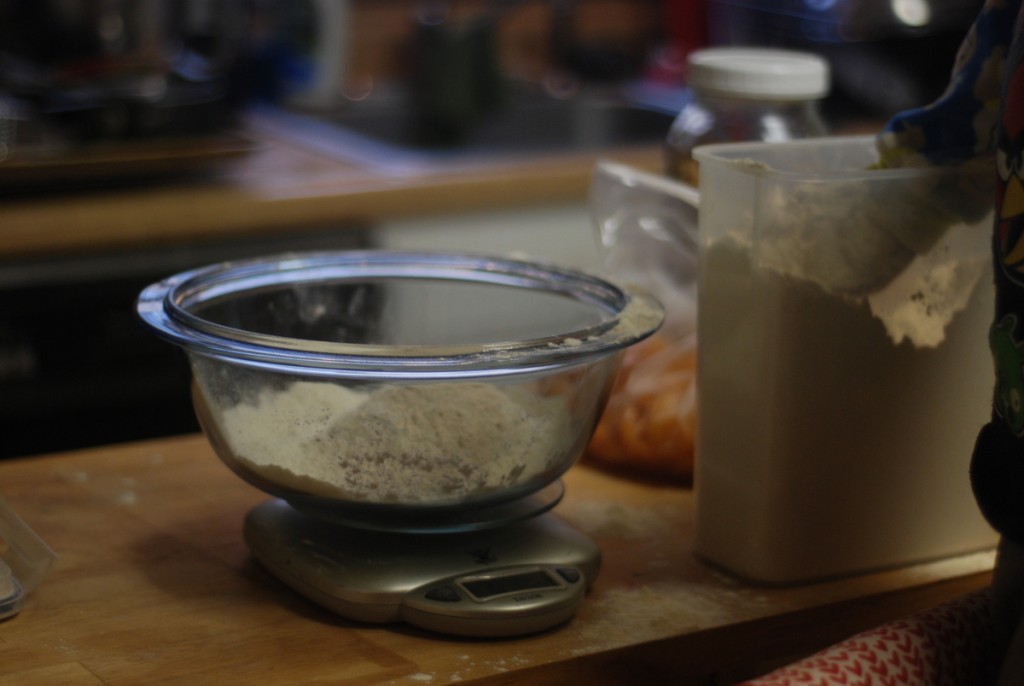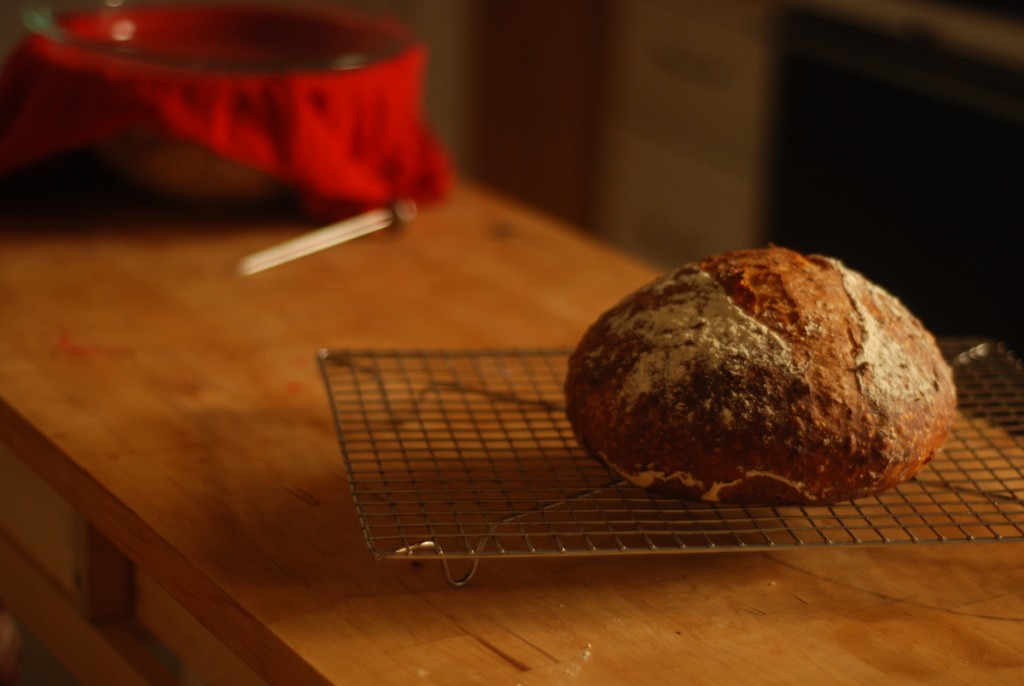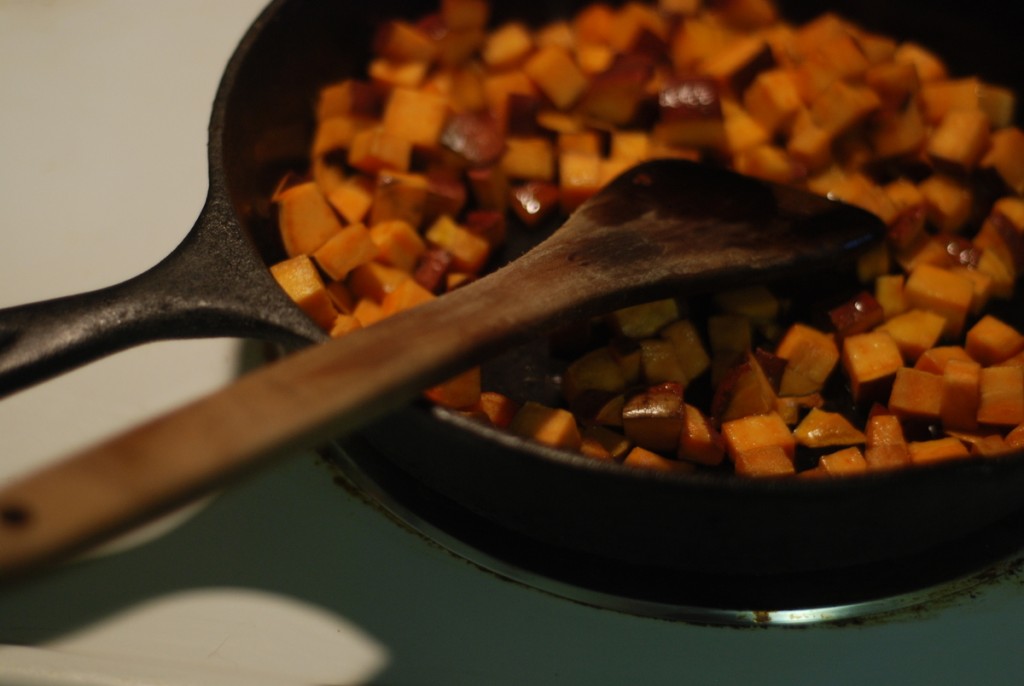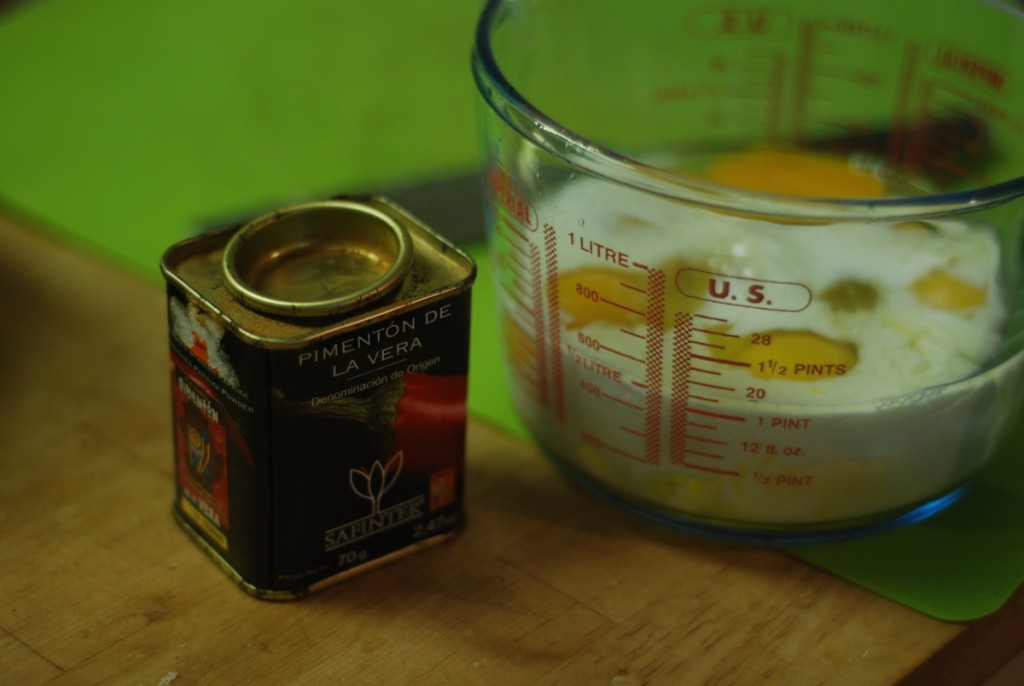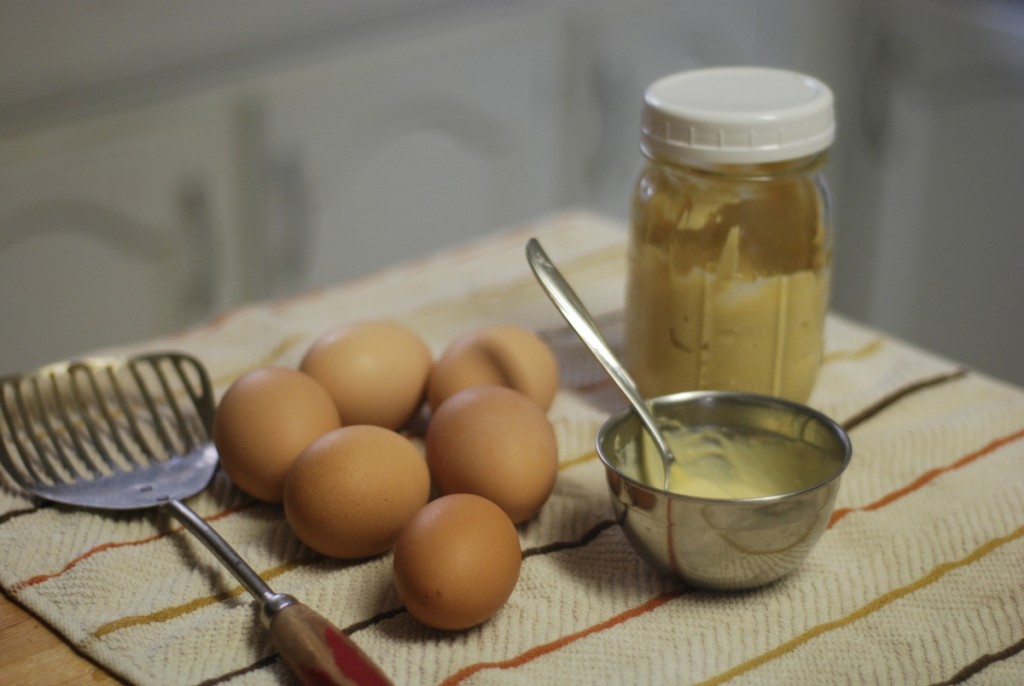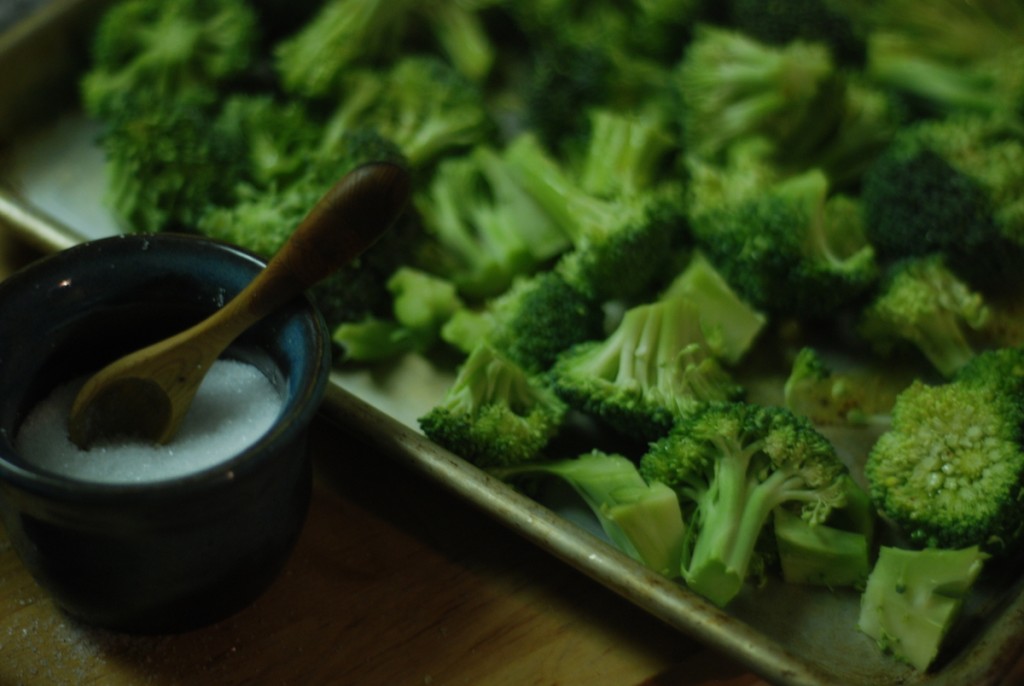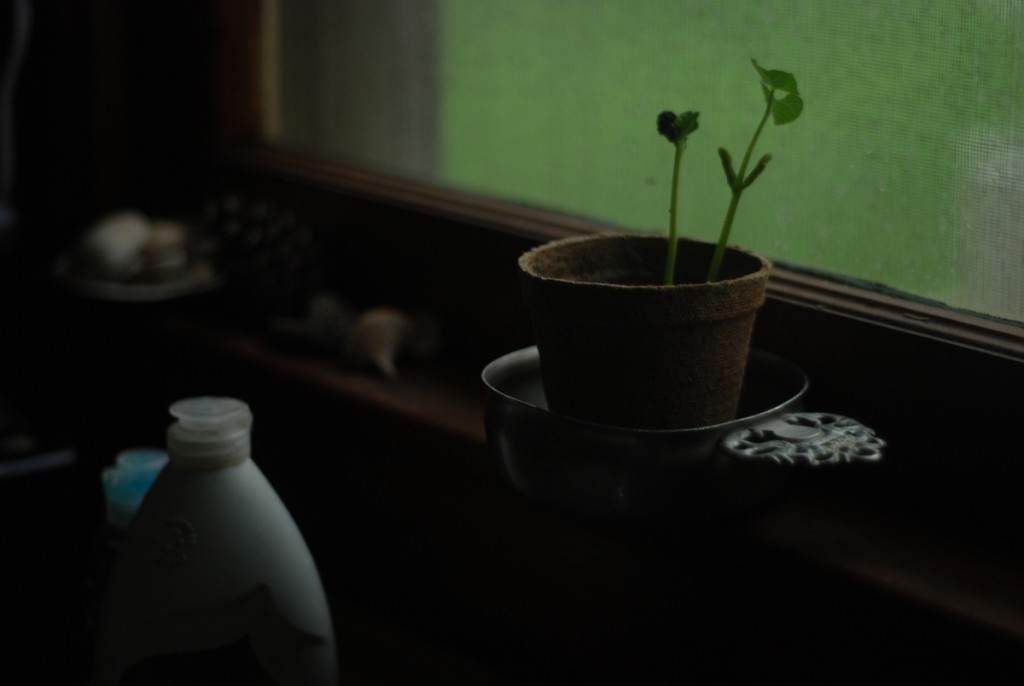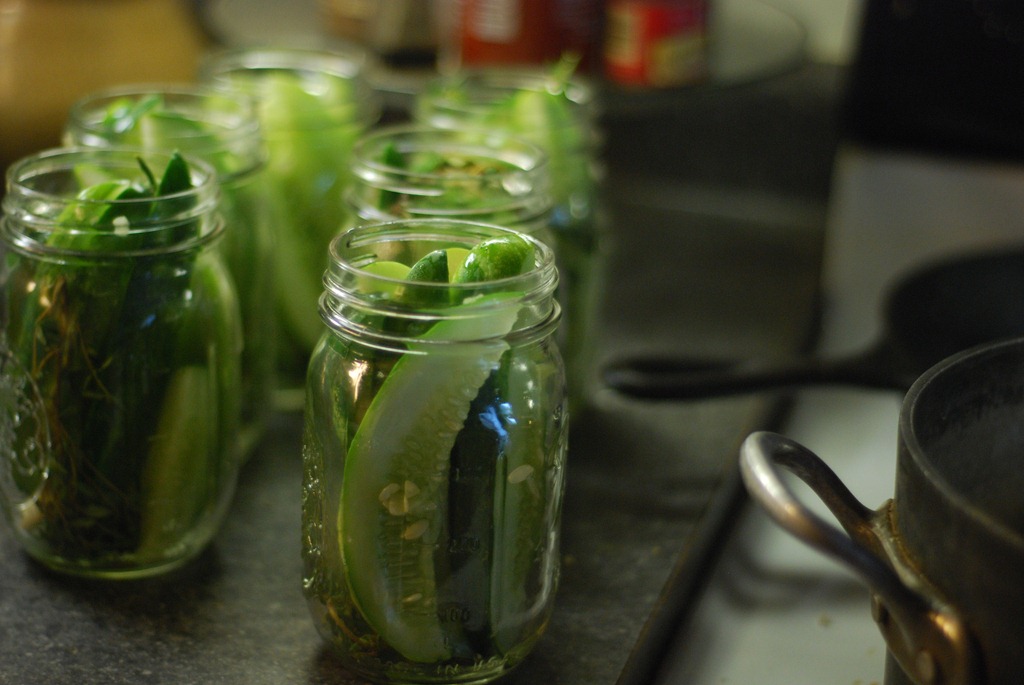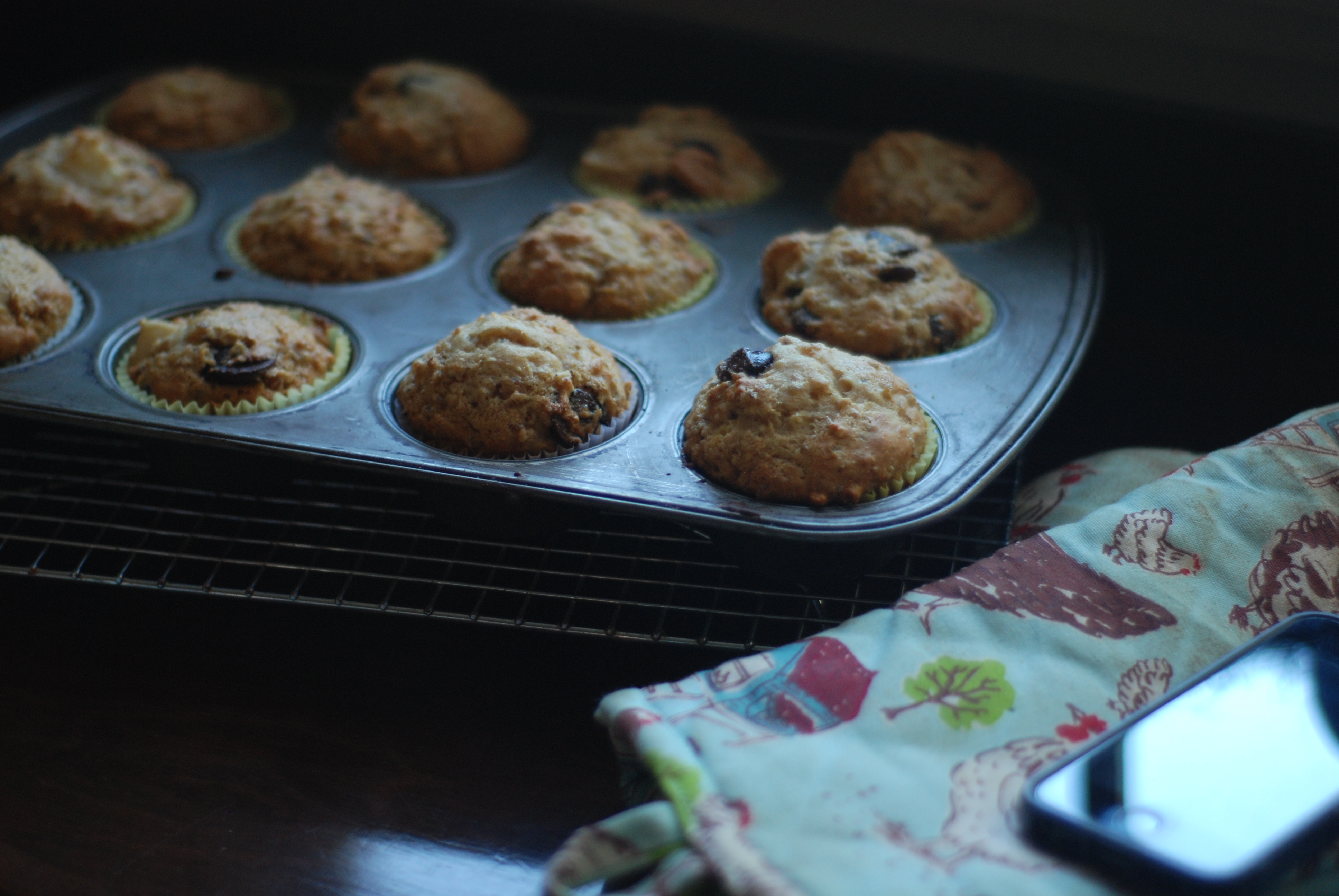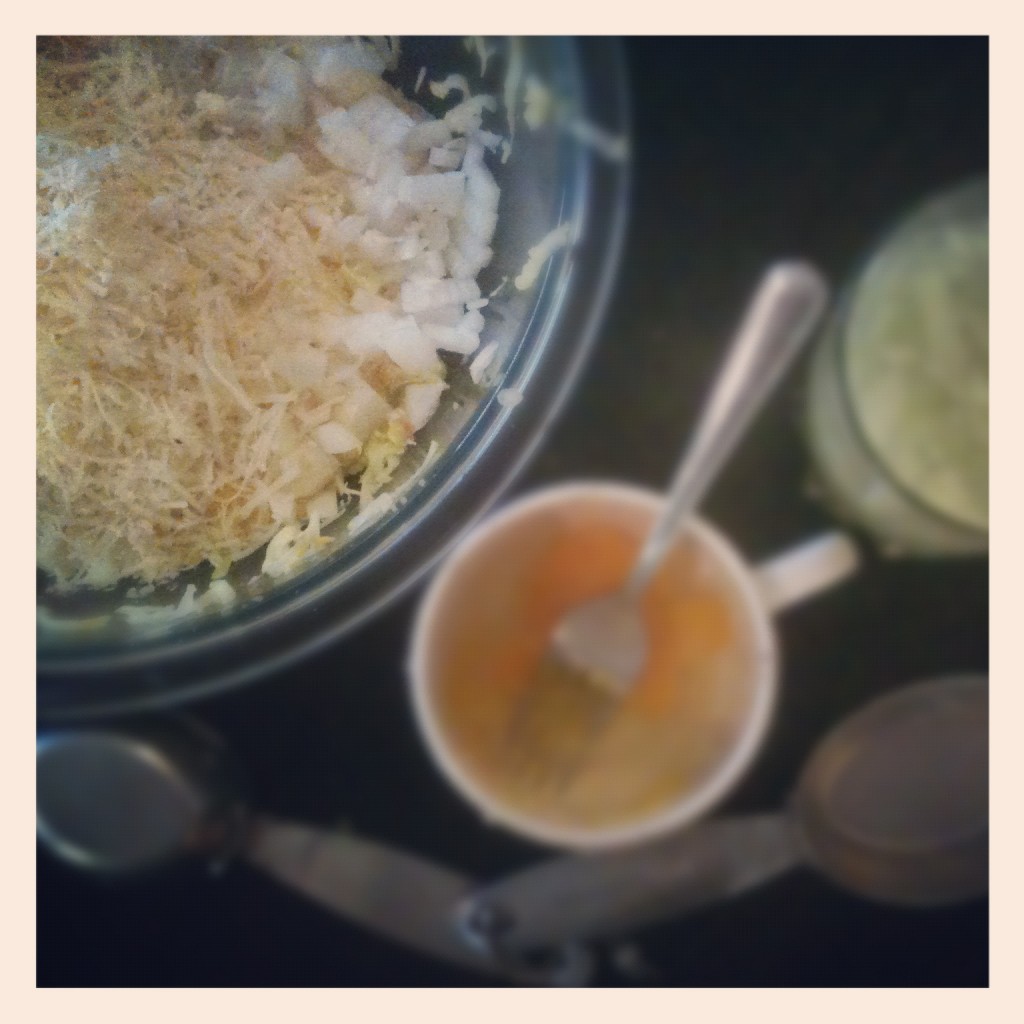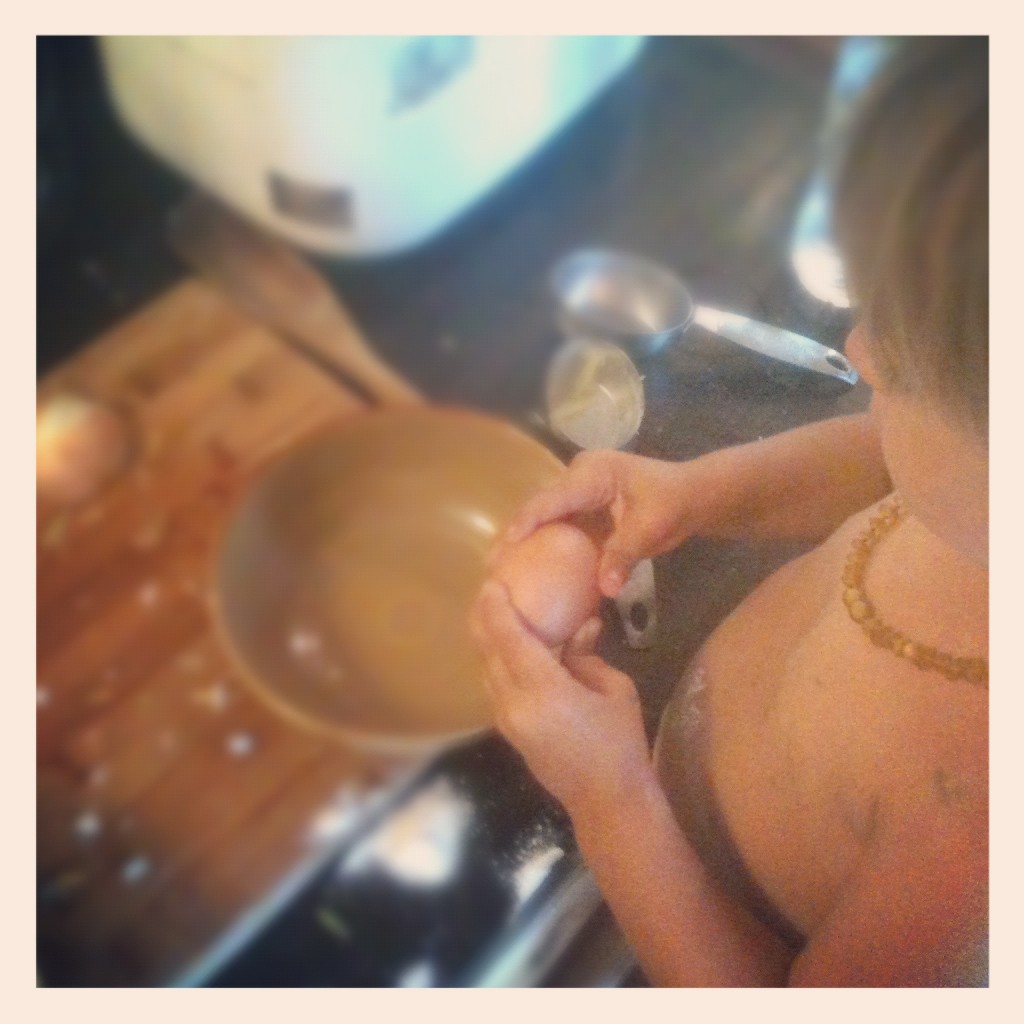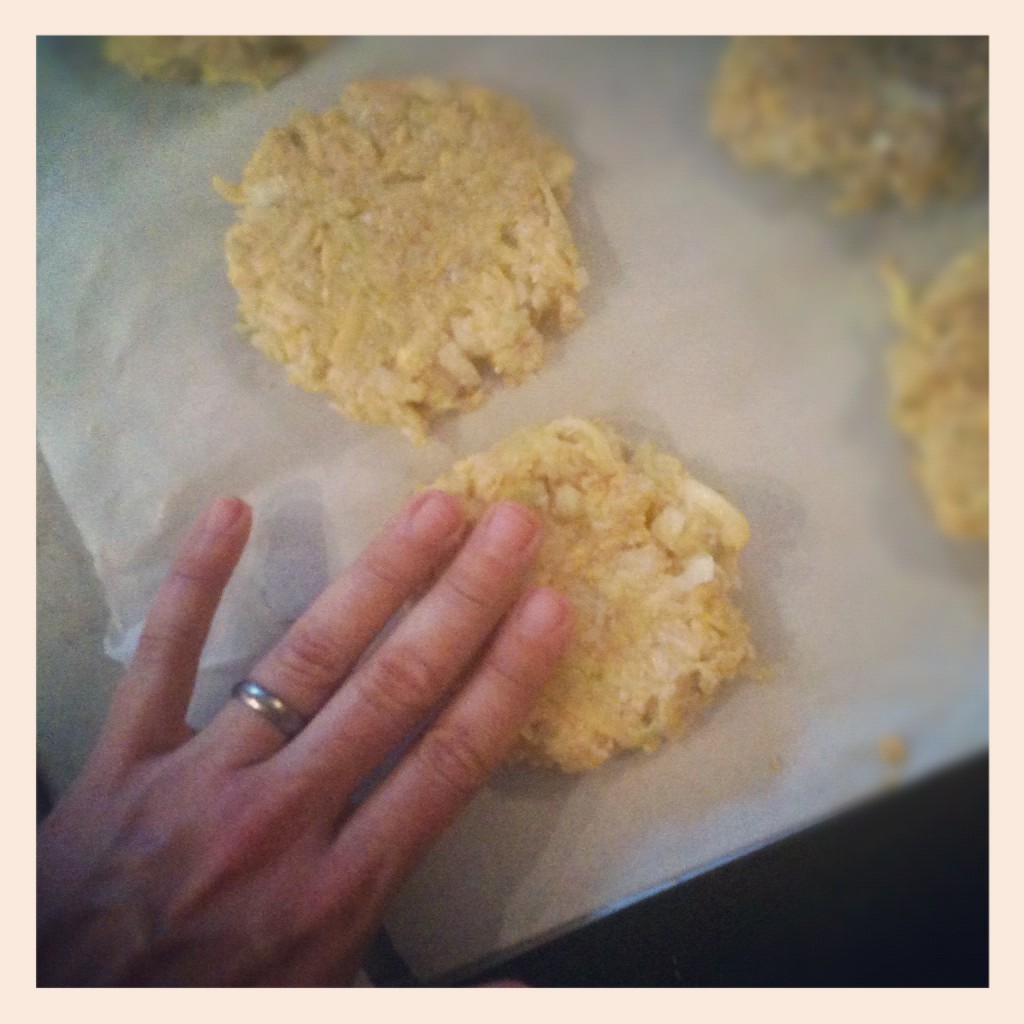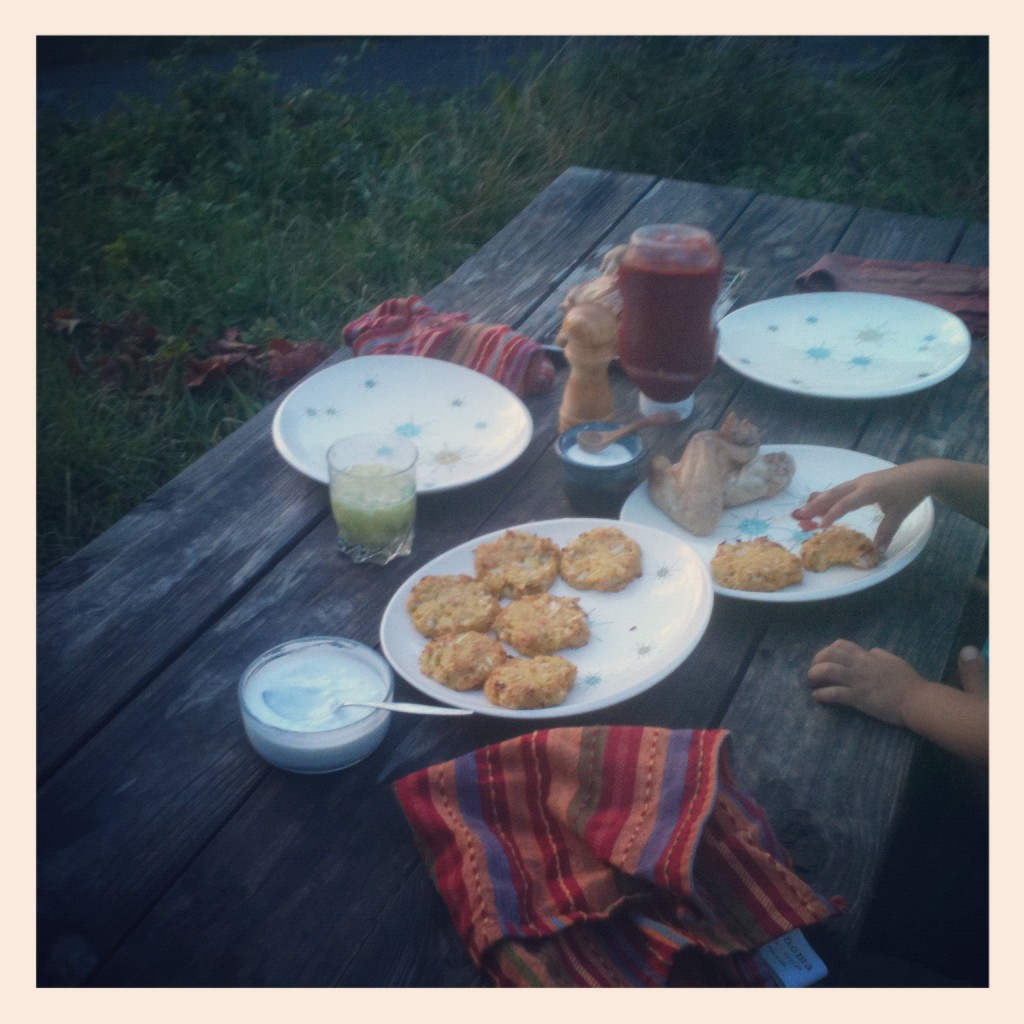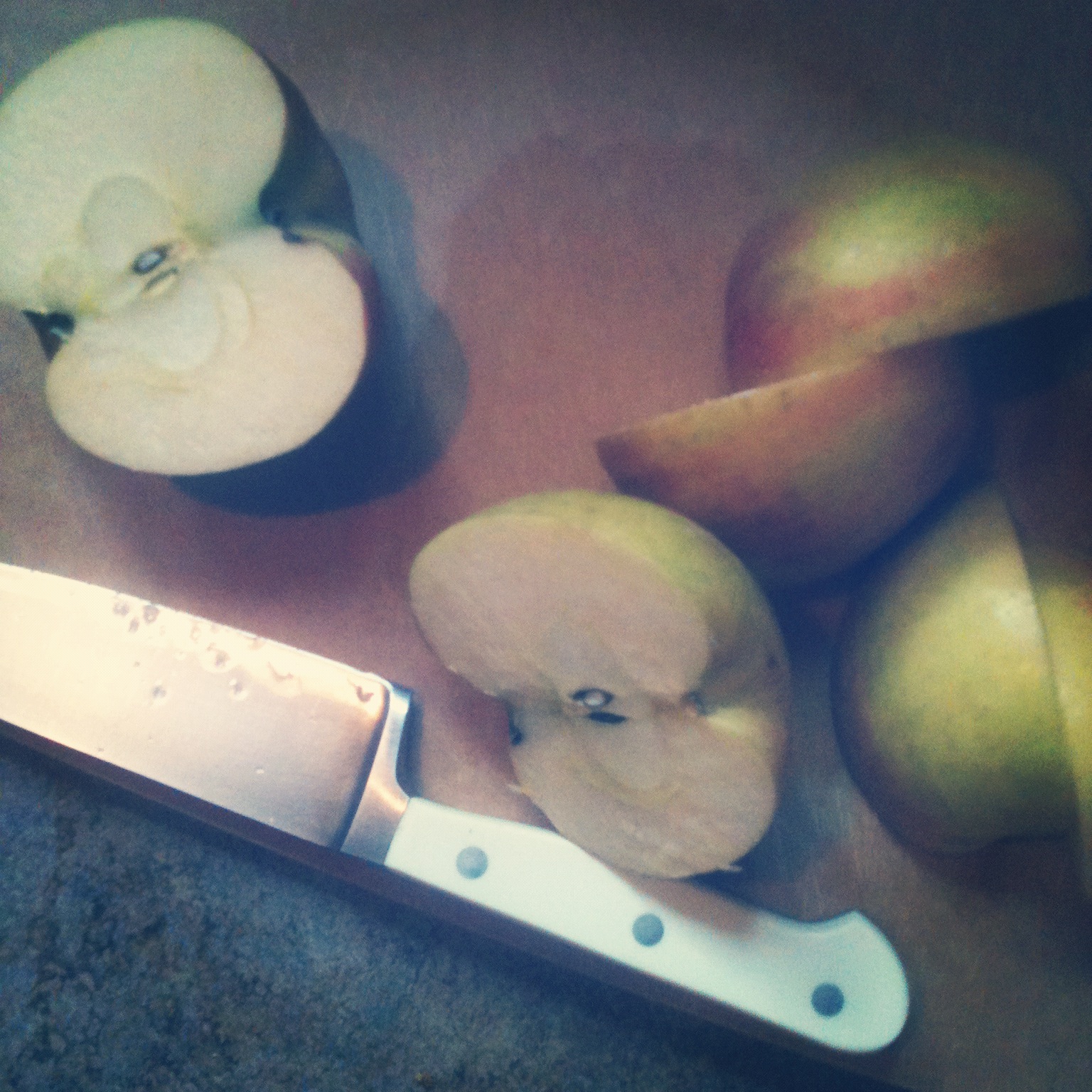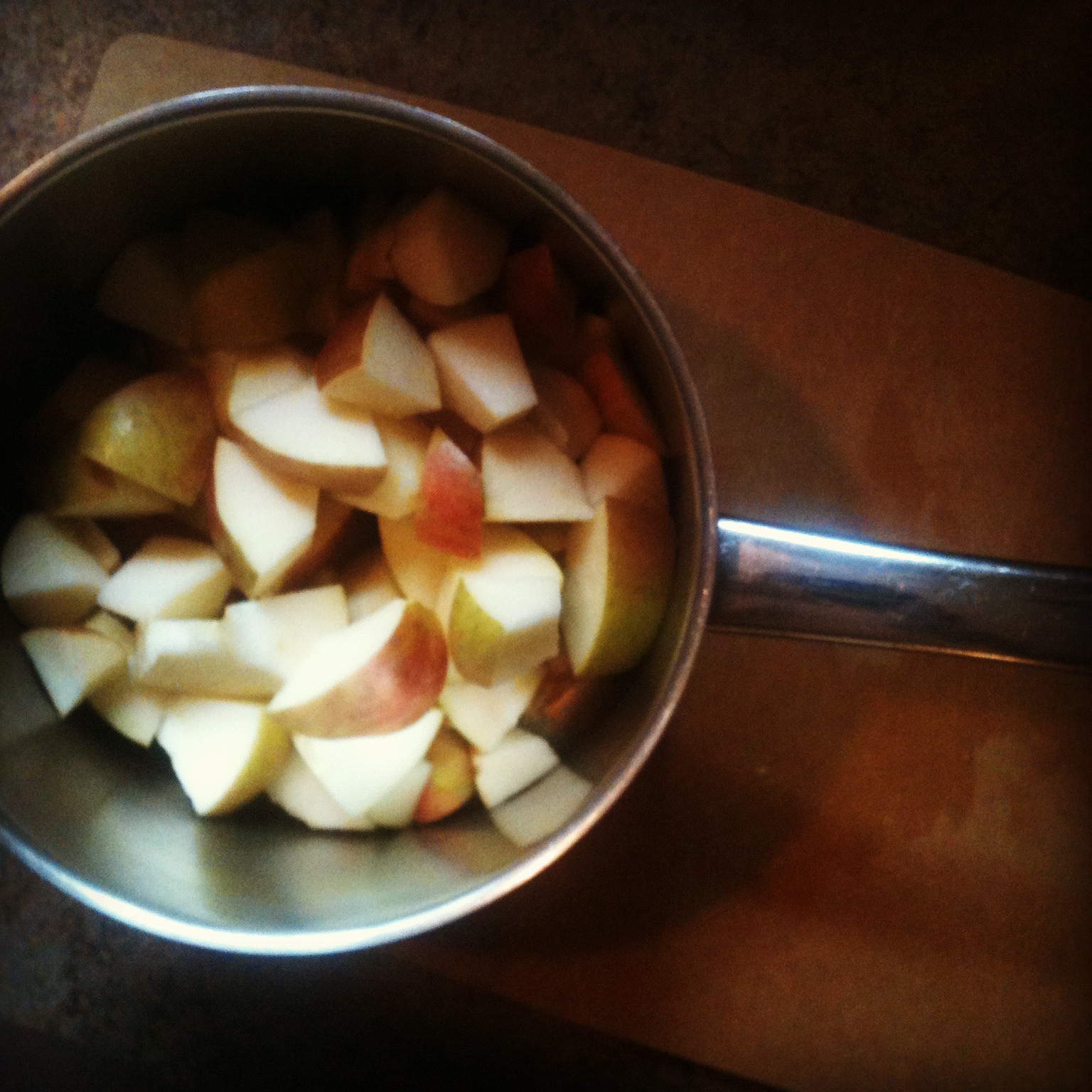A few days ago I sat at my computer, skimming recent photos, intending to join up with Heather in the new This Week in My Kitchen blog hop she’s hosting. The blog hop could not be more appealing to the totally-not-creepy-I-promise voyeur in me, the eater in me, and the can-we-sit-on-your-front-porch-in-rocking-chairs-drinking-sweet-tea-and-shelling-peas-? neighbor in me. And here’s what I noticed: we sure do eat a lot of eggs. 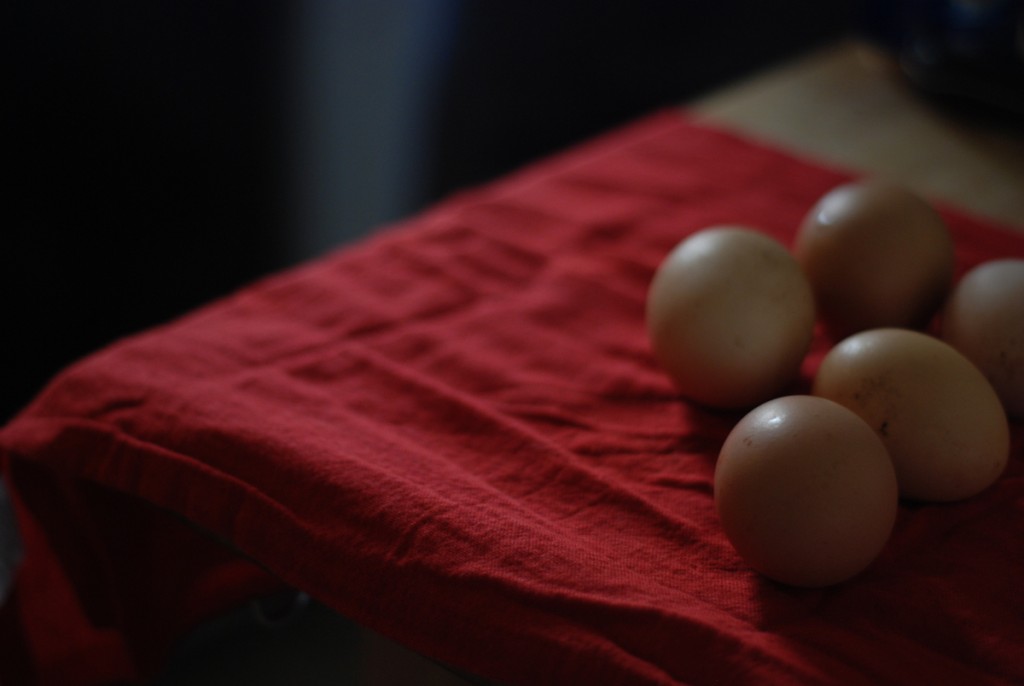 Farming for a living does something a little funny to a family, I think. You might assume we never buy strawberries from California or grapefruits from Florida and Texas, but that’s not quite the case. For one, we have to eat in the winter, and we are not great at putting up lots of our summer harvest. Also, we have a four-year old who is only just emerging from his beige food stage, and I am telling you, if it is real food and it has a color and he is willing to eat it, I will buy it. And also, frankly, we’re not in the most lucrative line of work. We shop where everyone else shops when there’s no food from the farm to eat. You’ll find plenty of conventional produce in our fridge and on our countertops, particularly in the winter and early spring. (I have a lot more to say about this, I think. Hoping to find the time, and the words, and the pluck, to write it down here someday.)
Farming for a living does something a little funny to a family, I think. You might assume we never buy strawberries from California or grapefruits from Florida and Texas, but that’s not quite the case. For one, we have to eat in the winter, and we are not great at putting up lots of our summer harvest. Also, we have a four-year old who is only just emerging from his beige food stage, and I am telling you, if it is real food and it has a color and he is willing to eat it, I will buy it. And also, frankly, we’re not in the most lucrative line of work. We shop where everyone else shops when there’s no food from the farm to eat. You’ll find plenty of conventional produce in our fridge and on our countertops, particularly in the winter and early spring. (I have a lot more to say about this, I think. Hoping to find the time, and the words, and the pluck, to write it down here someday.)  Animal products are trickier – tricky in general, and trickier still now that we don’t have our own land and are living in a beach town. Meat and dairy and eggs produced with respect for the animals and care for the land cost quite a bit more than their vegetable counterparts. And our grocery budget is very tight. But we don’t feel comfortable eating conventionally produced animals products regularly. I’ve said before that our fridge and pantry are an embarrassment of riches, and that was probably nowhere more true than when it came to the meat, dairy, and eggs we ate when we were farming our own land. We kept goats for milk; they were given to us by some neighbors who were thinning their herd, and as ruminants, their feed costs were quite low. When our goats weren’t in milk, we knew where to find other fresh milk. We always had laying hens. Some years they numbered in the hundreds, when we were selling eggs, and we kept the cracked eggs for ourselves. Other years we just kept a homestead flock. Either way, we never worried where our eggs were coming from. Most years we raised 50-75 Cornish Rock chickens for meat. That worked out to about one roast chicken a week, plus some extras for potlucks or for thank yous to farm sitters and neighbors. We always threw the bones from our roast chicken into a big freezer bag, and once we had enough, we’d make bone broth. Sometimes we had venison in the freezer too, also from our land. We kept pigs for two years, and although we couldn’t afford to eat our more expensive cuts, we always had sausage and ribs available, and pork belly for making bacon, and fatback for lard. These things saw us through the year quite well. Sometimes we traded tomatoes for ground beef at market, or we’d till a garden for our livestock farmer neighbors in return for a lamb shoulder. This is how we lived beyond our means.
Animal products are trickier – tricky in general, and trickier still now that we don’t have our own land and are living in a beach town. Meat and dairy and eggs produced with respect for the animals and care for the land cost quite a bit more than their vegetable counterparts. And our grocery budget is very tight. But we don’t feel comfortable eating conventionally produced animals products regularly. I’ve said before that our fridge and pantry are an embarrassment of riches, and that was probably nowhere more true than when it came to the meat, dairy, and eggs we ate when we were farming our own land. We kept goats for milk; they were given to us by some neighbors who were thinning their herd, and as ruminants, their feed costs were quite low. When our goats weren’t in milk, we knew where to find other fresh milk. We always had laying hens. Some years they numbered in the hundreds, when we were selling eggs, and we kept the cracked eggs for ourselves. Other years we just kept a homestead flock. Either way, we never worried where our eggs were coming from. Most years we raised 50-75 Cornish Rock chickens for meat. That worked out to about one roast chicken a week, plus some extras for potlucks or for thank yous to farm sitters and neighbors. We always threw the bones from our roast chicken into a big freezer bag, and once we had enough, we’d make bone broth. Sometimes we had venison in the freezer too, also from our land. We kept pigs for two years, and although we couldn’t afford to eat our more expensive cuts, we always had sausage and ribs available, and pork belly for making bacon, and fatback for lard. These things saw us through the year quite well. Sometimes we traded tomatoes for ground beef at market, or we’d till a garden for our livestock farmer neighbors in return for a lamb shoulder. This is how we lived beyond our means.
Here, in our beautiful beach town, we’re learning a new normal when it comes to this stuff. We don’t have our own land, so there’s no way to easily raise our own meat. And this is a resort town, with a huge summer population that turns over weekly and very sleepy winters. So it’s a tough place to be a market farmer selling most of your products retail, and therefore a tough place to find raw milk or grassfed beef. So what does this mean for us? Well, first, as the freezer stock we brought with us dwindles, it means we are eating less meat. It also means we compromise. We buy organic milk at the grocery store, but we don’t know where it comes from or how the cows were treated. We can’t trade for amazing cheeses at market anymore and so we buy from Miss Linda at the deli counter. She and my son are becoming fast friends. We usually buy Dannon yogurt. 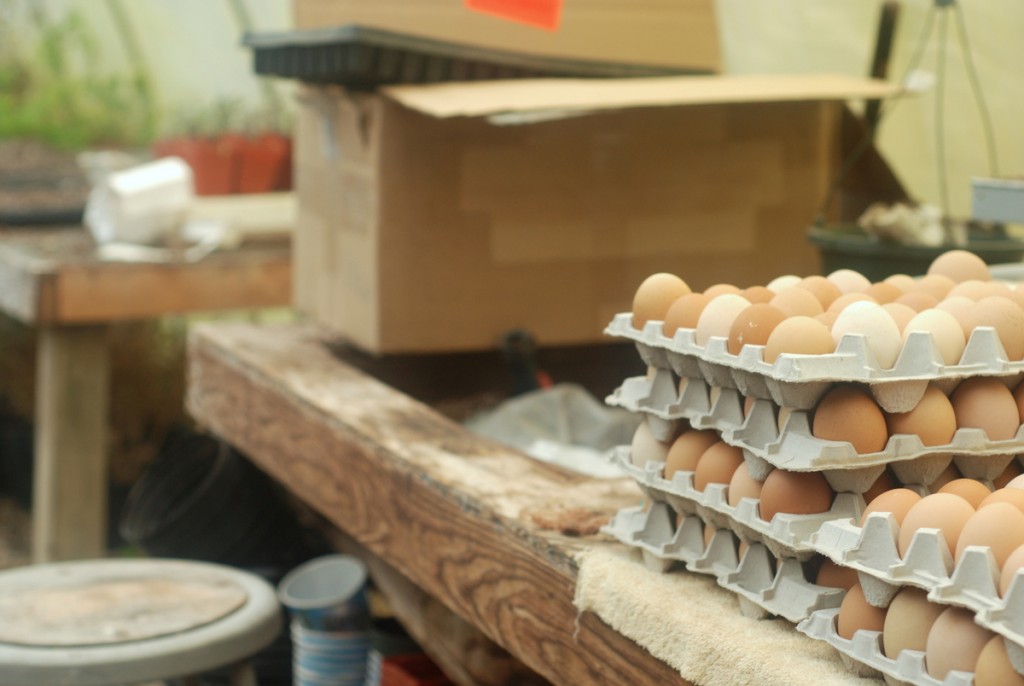 But eggs. For some reason, I can’t relax about eggs. Why? There are many, many reasons to eat locally produced foods in season – some of those reasons matter quite a lot and others, I am starting to think as the years go by, are perhaps overplayed. I don’t think it’s an exaggeration, though, to say that fresh food tastes better. The lettuce you picked at 11:30 to eat in a salad at noon? Those dead ripe, still-warm-from-the-vine Sungolds? Broilers you raised in your backyard whose grain was supplemented with daily kitchen scraps and June bugs they chased down themselves? It’s really no contest. But when it comes to eggs, maybe I’m wrong.
But eggs. For some reason, I can’t relax about eggs. Why? There are many, many reasons to eat locally produced foods in season – some of those reasons matter quite a lot and others, I am starting to think as the years go by, are perhaps overplayed. I don’t think it’s an exaggeration, though, to say that fresh food tastes better. The lettuce you picked at 11:30 to eat in a salad at noon? Those dead ripe, still-warm-from-the-vine Sungolds? Broilers you raised in your backyard whose grain was supplemented with daily kitchen scraps and June bugs they chased down themselves? It’s really no contest. But when it comes to eggs, maybe I’m wrong.
I don’t know. Maybe it’s personal. I have washed I don’t know how many thousands of eggs over the years. There were times I thought my brain might rot from the endless, changeless hours of scrubbing, but sometimes I really found peace in the rhythm. (Either that or I found a bottle of tequila and mixed myself a margarita, after which everything looked cheerier.)  Here’s what I do know. I know there is not much farm fresh food to be had before May in this part of the country. I know I am only two months into learning how to mother two children and there is no elaborate or inspired cooking going in. I know eggs are fast and healthy and always delicious. (We are big, big fans of not really cooking dinner around here. Scrambled eggs and toast ranks just after popcorn and smoothies and just before a baked potato bar on our Effort Scale.)
Here’s what I do know. I know there is not much farm fresh food to be had before May in this part of the country. I know I am only two months into learning how to mother two children and there is no elaborate or inspired cooking going in. I know eggs are fast and healthy and always delicious. (We are big, big fans of not really cooking dinner around here. Scrambled eggs and toast ranks just after popcorn and smoothies and just before a baked potato bar on our Effort Scale.)
The best thing I know? My kid will always crack an egg. I think this matters to me more than whether or not he’ll eat one. We have cooked with our son since he was just a few weeks old. He started in a sling on my hip as I stirred stock or sliced tomatoes, and he perched on my husband’s shoulder a few months later as they flipped pancakes together. When he was steady(ish) on his feet, he graduated to a beautiful homemade learning tower we received from a friend in trade for one of our CSA shares. We taught him more than two years ago how to crack an egg, and how to scramble it too. He has a preferred whisk. He can safely use a sharp knife.
I cannot take credit for much of his awesomeness, but I do think that keeping him right alongside us in the kitchen is one of the better calls we’ve made as parents. They say that when your kid cooks with you, he’ll be more likely to develop a broad palate – that hasn’t been our experience. But, and I say this with a hard-won and bittersweet clarity: that is almost beside the point. My children do not belong to me, and I can no more easily dictate what they will eat now than who they will love later. What I can do is give them skills – how to use that knife, how to know when cupcakes are done, what to do with a few wilted carrots and an onion – and I can also give them my time. It’s the thing, you know. The thing that matters.
I had a baby two months ago. She has rosy cheeks and big eyes. She sleeps a dream, for now. She loves to watch her brother talk, and she loves it when we sing the Mighty Machines theme song (or, oh my gosh, in French!) to her during diaper changes. She gasps when the bay breezes rush over her shoulders. And she nurses the day away. I love her, hard.
I also miss my boy.
But you know, thanks to those damn farm eggs, we’re finding our way back to one another.
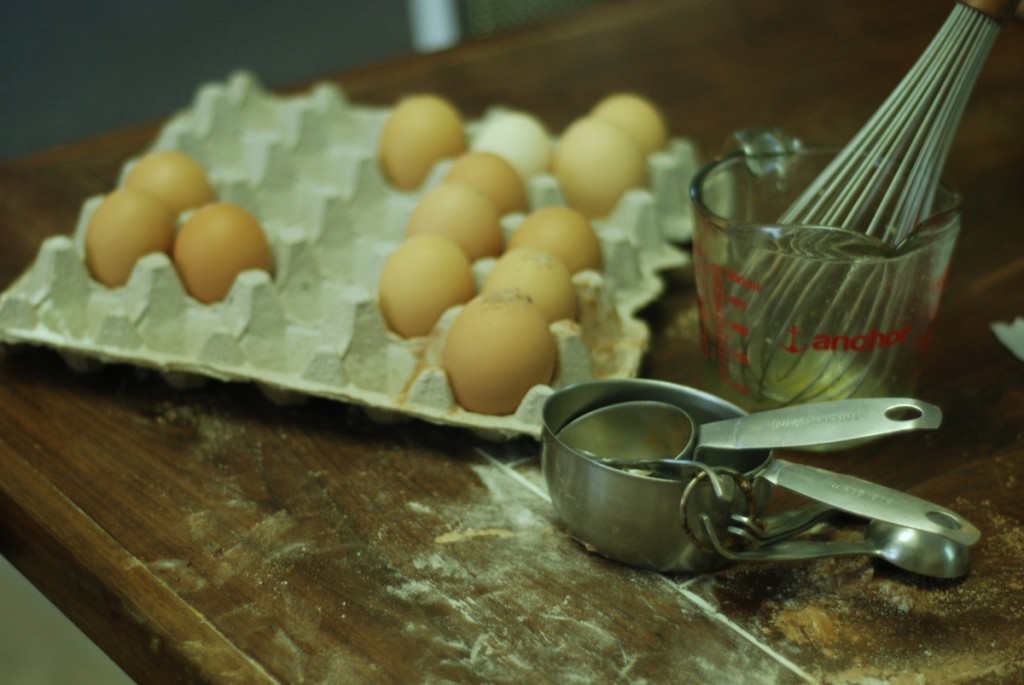
Classic Vanilla Cupcakes with Cream Cheese Frosting
cupcakes adapted from The Fannie Farmer Cookbook, Twelfth Edition (1979)
I am not kidding when I say we made these cupcakes a totally immoderate three times last week. Partly it’s that we had a lot of leftover frosting from a cake we’d made the week before, and what were we going to do, give it to the pigs? I don’t think so. Partly it’s that they’re just so good, and we found we didn’t like being out of cupcakes. Mostly, it’s that something really good happened when I tucked my sleeping baby tight against my chest in the sling and invited my son into the kitchen to mix up the second batch. He leaped from the couch with an enormous grin, after a week of furrowed brow and clenched fist. He chose the eggs he wanted to use and watched, rapt, as I showed him how to separate the whites from the yolks. He turned on the mixer, and he measured and added the ingredients as I read him the recipe, and he taste tested the batter every step of the way (because that’s how you get good at this, right?), and he spooned the batter into the muffin tin. Later, when he ate his cupcake from the top down and asked for a second layer of frosting when the first was all gone, I wanted to say, “My beloved child! You have no idea how much I’ve missed you! We spent four years walking through our days hand in hand and now we have to make some space in our togetherness and I believe with all I’ve got that your life is going to be better because your sister is in it but it’s really hard for me right now and YOU CAN HAVE ALL THE FROSTING!” But instead I just handed him the spatula.
The cupcakes were my idea, by the way, and not his. I bake quite a lot but didn’t have a go-to cupcake recipe. I avoided looking for one online altogether, knowing how many I’d find, and instead I stood quite thoughtfully in front of my cookbook shelf, considering. I wanted something simple and classic. I was willing to put in a little effort, but I dismissed any recipes that insisted on cake flour (we don’t usually have it around) or a different number of egg yolks and whites (yes, there are always ways to use leftovers of either, but again with the new baby – I knew I’d just give any leftover egg to the dog). When I pulled my Fannie Farmer off the shelf and read the recipe for Boston Favorite Cake, I knew I’d found what I wanted right away. That Marion Cunningham. She knew a thing or two.
(A note on the frosting: I used a cream cheese frosting because I almost never want anything else, but a basic buttercream would be good too. Or play around – add some almond or lemon extract, or some citrus zest. Mmm. It might be time for a fourth batch of these babies.)
For the cupcakes:
2 eggs, separated
6 tablespoons/85 grams butter, room temperature
1 cup/200 grams sugar
1 1/2 teaspoons vanilla extract
1 3/4 cups/245 grams all-purpose or cake flour
2 teaspoons baking powder
1/2 teaspoon salt
2/3 cup milk
For the frosting:
1 8-oz/226 gram package full-fat cream cheese, room temperature
1 stick/113 grams butter, room temperature
1 teaspoon vanilla extract
2 cups/250 grams powdered sugar
Preheat the oven to 350°F/180°C. Line a muffin tin with cupcake liners (recommended) or generously grease and flour the tin. (This recipe makes an awkward 14 cupcakes. You can either find two small oven-safe bowls and put an additional two cupcake liners in those, or you can grease and flour a ramekin and make a very tiny cake with the extra batter.)
Make sure your mixer bowl is very clean. Using the whisk attachment, beat the egg whites on fairly high speed until they are quite stiff but not dry. Scrape them gently into a medium bowl and set aside.
Switch to the paddle attachment, but don’t worry about cleaning the bowl. Cream the butter for a few seconds and then add the sugar slowly, beating until the mixture is light. Add the egg yolks and the vanilla and beat until well blended.
In a separate bowl, whisk together the flour, baking powder, and salt. With the mixer on low, add about a third of the flour mixture to the butter/sugar/egg yolks and beat until just incorporated. Add about a third of the milk and beat until blended. Repeat twice with the remaining flour mixture, following each time with a bit of the remaining milk. The batter should be smooth at this point, but be careful not to overblend.
Add about a third of your egg whites to the batter and mix on low until incorporated. Remove the bowl from the mixer and fold in the remaining egg whites by hand with a spatula. You don’t need to be too gentle – you’re not making a soufflé. Fold well enough that the egg whites are thoroughly incorporated but still light and fluffy.
Spoon the batter into the muffin tin and other pans of your choice (see note above), filling each well about halfway. Bake for 15-20 minutes, or until the cupcakes are lightly browned on top and spring back when you touch them. (These consistently take 18-19 minutes in my oven, but I confess that since our move I haven’t confirmed my oven temperature with a thermometer, which I really do recommend.) Cool on a wire rack, in or out of the tin (these don’t seem to suffer from being left in the tin to cool).
Meanwhile, make your frosting. Using the paddle attachment, cream together the butter and cream cheese until fluffy. Beat in the vanilla extract. Add the powdered sugar a bit at a time, beating until smooth and thick.
Wait until the cupcakes are cool to frost. Or frost them as you need them. You’ll have more frosting than you need. The cupcakes keep well at room temperature for about a week in an airtight container or zippered plastic bag, and the frosting keeps for about a week in the fridge, or for quite a long time in the freezer.
